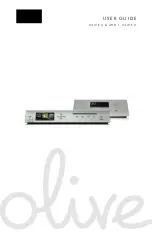
• Sharp edges, corners and joints may be present in and around the system. Use care when
handling equipment to avoid cuts, scrapes and pinching.
(D005)
Important: Use only approved tools and test equipment. Some hand tools have handles covered with a
soft material that does not insulate you when working with live electrical currents. Many customers have,
near their equipment, rubber floor mats that contain small conductive fibers to decrease electrostatic
discharges. Do not use this type of mat to protect yourself from electrical shock.
• Find the room emergency power-off (EPO) switch, disconnecting switch, or electrical outlet. If an
electrical accident occurs, you can then operate the switch or unplug the power cord quickly.
• Do not work alone under hazardous conditions or near equipment that has hazardous voltages.
• Disconnect all power before the following activities:
– Performing a mechanical inspection
– Working near power supplies
– Removing or installing main units
• Before you start to work on the unit, unplug the power cord. If you cannot unplug it, ask the customer to
power off the wall box that supplies power to the device and to lock the wall box in the off position.
• If you need to work on a device that has exposed electrical circuits, observe the following precautions:
– Ensure that another person, familiar with the power-off controls, is near you.
Remember: Another person must be there to switch off the power, if necessary.
– Use only one hand when working with electrical equipment that has the power turned on; keep the
other hand in your pocket or behind your back.
Remember: There must be a complete circuit to cause electrical shock. By observing the previous
rule, you might prevent a current from passing through your body.
– When using testers, set the controls correctly and use the approved probe leads and accessories for
that tester.
– Stand on suitable rubber mats (obtained locally, if necessary) to insulate you from grounds such as
metal floor strips and machine frames.
Observe the special safety precautions when you work with very high voltages; these instructions are in
the safety sections of maintenance information. Use extreme care when measuring high voltages.
• Regularly inspect and maintain your electrical hand tools for safe operational condition.
• Do not use worn or broken tools and testers.
• Never assume that power has been disconnected from a circuit. First, check that power has been
powered off.
• Always look carefully for possible hazards in your work area. Examples of these hazards are moist
floors, nongrounded power extension cables, power surges, and missing safety grounds.
• Do not touch live electrical circuits with the reflective surface of a plastic dental mirror. The surface is
conductive; such touching can cause personal injury and device damage.
• Do not service the following parts with the power on when they are removed from their normal
operating places in a device. (This practice ensures correct grounding of the units.)
– Power supply units
– Pumps
– Blowers and fans
– Motor generators
– And similar units
• If an electrical accident occurs:
– Use caution; do not become a victim yourself.
Safety and environmental notices xxiii
Summary of Contents for SAN Volume Controller 2145-12F
Page 1: ...IBM SAN Volume Controller Hardware Installation Guide IBM...
Page 6: ...vi...
Page 48: ...16 SAN Volume Controller Model 2145 SV1 Hardware Installation Guide...
Page 62: ...30 SAN Volume Controller Model 2145 SV1 Hardware Installation Guide...
Page 72: ...40 SAN Volume Controller Model 2145 SV1 Hardware Installation Guide...
Page 168: ...136 SAN Volume Controller Model 2145 SV1 Hardware Installation Guide...
Page 176: ...144 SAN Volume Controller Model 2145 SV1 Hardware Installation Guide...
Page 178: ...146 SAN Volume Controller Model 2145 SV1 Hardware Installation Guide...
Page 182: ...150 SAN Volume Controller Model 2145 SV1 Hardware Installation Guide...
Page 192: ...160 SAN Volume Controller Model 2145 SV1 Hardware Installation Guide...
Page 193: ......
Page 194: ...IBM...
















































